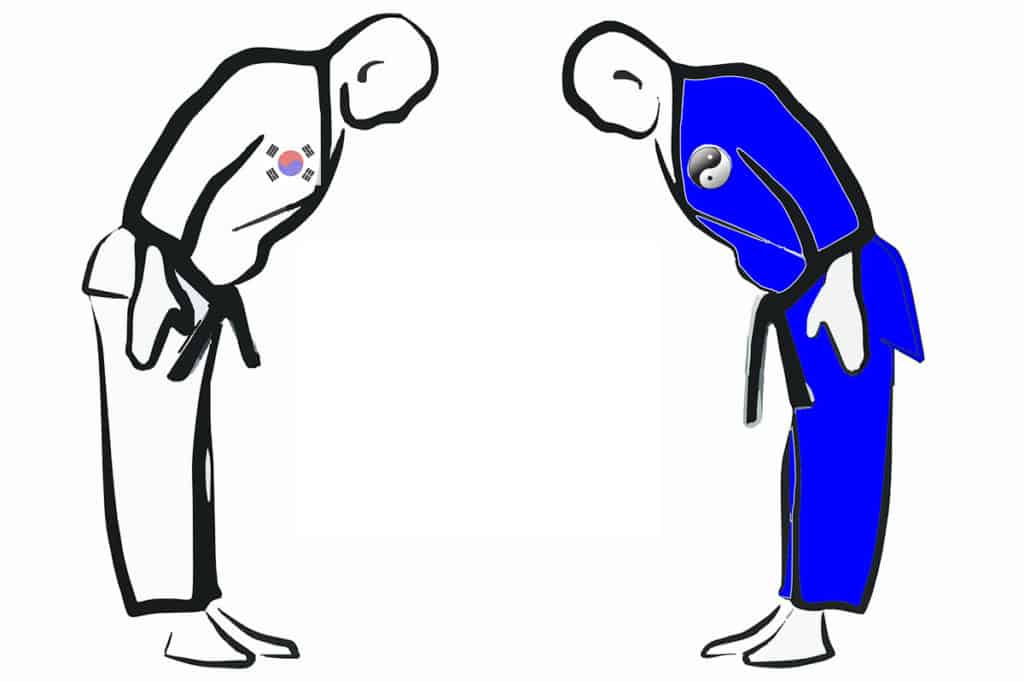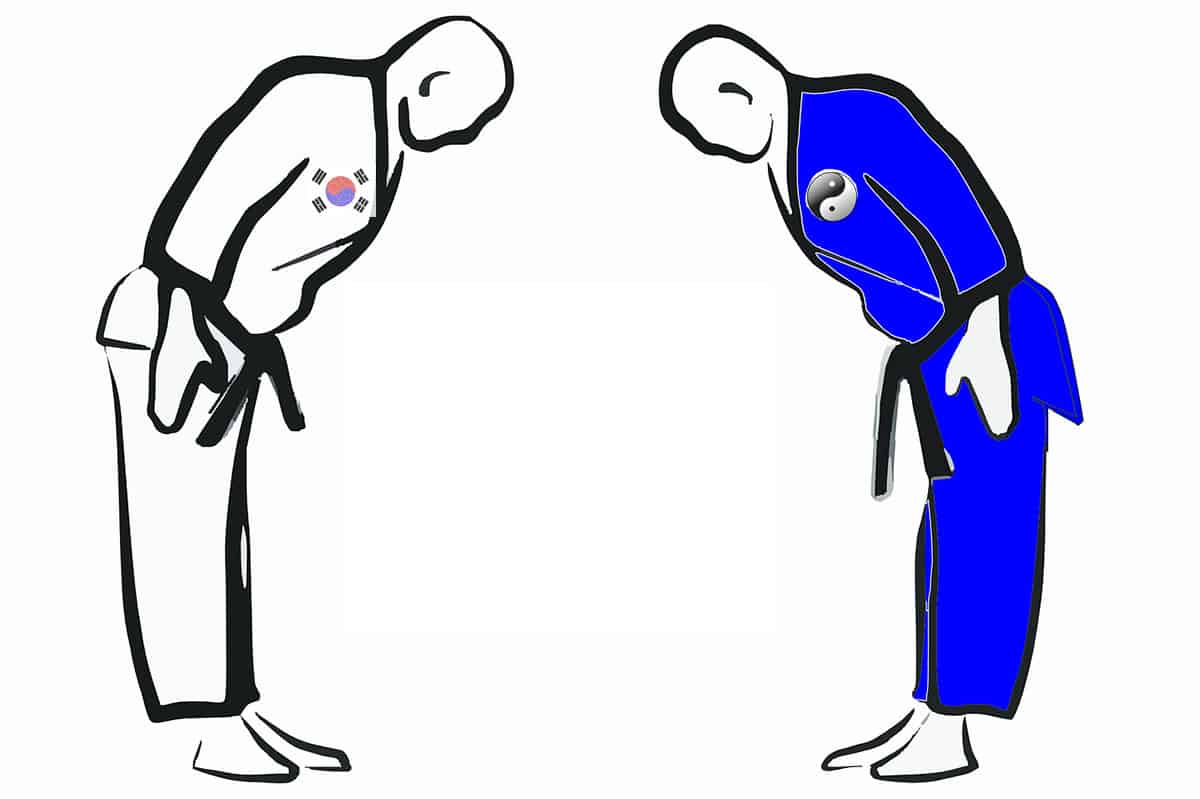
Taekwondo and Wing Chun have just about nothing in common and therefore the differences between these two martial arts are vast. They were developed in two different countries with completely different techniques and philosophies on fighting. The only similarity you will find that they have in common are that they’re used for self-defense.
In order to get a better understanding, let’s talk about everything from each of these martial arts’ history and techniques to their philosophies to put it all into perspective.
History
Wing Chun
Wing Chun is a Chinese martial art that falls under Kung Fu or Wushu. It was first developed in southern China over 300 years ago by a Buddhist nun named Ng Mui.
Grandmaster Mui was also a master of Shaolin Kung Fu and was said to be one of the legendary Five Elders. Later in Mui’s life, he would begin creating his own fighting form, which would be called Wing Chun.
Early on, Wing Chun was a protected martial art, and only a handful of students were permitted to learn it. Ng Mui’s first student was actually a woman named Yim Wing Chun, who the martial art was named after.
Wing Chun remained a guarded martial art for hundreds of years until the early 20th century. This is when the legendary Wing Chun master Ip Man moved to Hong Kong and began teaching non-Chinese students.
Ip Man would be scrutinized for this action, but he would be responsible for spreading Wing Chun worldwide. His most famous student was Bruce Lee, who would become an icon in the martial arts world.
Taekwondo
If you’re a Taekwondo practitioner, you probably already know its history, but here’s a refresher. Taekwondo’s art is less than a century old, but the techniques date back centuries.
When Japan occupied Korea, they tried to erase the nation’s history and replace it with their own. After WW2, Korea regained control of its country and looked to take its identity back.
Many Korean martial arts masters who were taught secretly during the occupation got together to discuss forming a national martial art.
What they came up with would be known throughout the world as Taekwondo. Two of the most influential martial artists that helped create Taekwondo were Dr. Un Yong Kim and General Choi Hong-Hi.
Dr. Kim founded World Taekwondo, and General Choi was credited with coming up with the name Taekwondo.
Soon after Taekwondo’s development, the first world championship was held in 1973 and became an official Olympic sport in 2000. In a short time, Taekwondo took off rapidly and is now practiced by tens of millions of people worldwide.
Techniques
The most obvious difference between Taekwondo vs. Wing Chun is the techniques within these martial arts. Taekwondo predominantly consists of kicking techniques with basic punches mixed with jumping and spinning to create more force.
Wing Chun predominantly consists of hand striking techniques. Most of which are counter strikes to defend against an attacking opponent. The techniques used depend on how an opponent tries to attack a Wing Chun practitioner.
Fighting Range and Stances
On top of each martial art’s techniques, the fighting ranges and stances are other obvious differences. Wing Chun is a classic southern Kung Fu style performed at close range with a semi-square stance.
A Wing Chun practitioner will loosely hold their hands up to block any incoming hand strikes or grabs. Taekwondo is fought from a distance, where practitioners have a wider stance and stand at an angle.
This is very similar to the difference between southern styles of Kung Fu and long-range northern Kung Fu styles.
Philosophies
Obviously, these two martial arts were founded on very different philosophies to go along with techniques and stances. Wing Chun is a classical defensive martial art based around patterned movements to respond to attacks. Taekwondo is more of an attacking martial art, where techniques are done from long range to create power.
Learning both Taekwondo and Wing Chun
If you wanted to learn grappling techniques to go along with your Taekwondo, it couldn’t hurt to learn Wing Chun. Although Brazilian Jiu Jitsu, wrestling, or Judo would be much better forms of grappling to compliment your Taekwondo. They will help you defend yourself on the ground, get to your feet, make space, and use your Taekwondo techniques.
Bottom Line: Which Martial Art is Better?
Taekwondo is by far a better martial art to learn than Wing Chun. The problem with Wing Chun is that it’s constrained by being a classical martial art based on patterns.
For the techniques to work, you must attack like a Wing Chun practitioner. Taekwondo is a bit more free form, where the attacks don’t come in a pattern.
If a Taekwondo practitioner were to go against a Wing Chun practitioner, the Taekwondo practitioner would be at an extreme advantage.
Wing Chun does not have an answer for barrages of powerful long-range attacks. A Taekwondo practitioner could stay on the outside and pick a Wing Chun practitioner apart without much resistance.
The Final Word
In a matchup between Taekwondo vs. Wing Chun, the obvious winner would be Taekwondo. The speed and power of Taekwondo would just be too much for a Wing Chun practitioner to handle.


